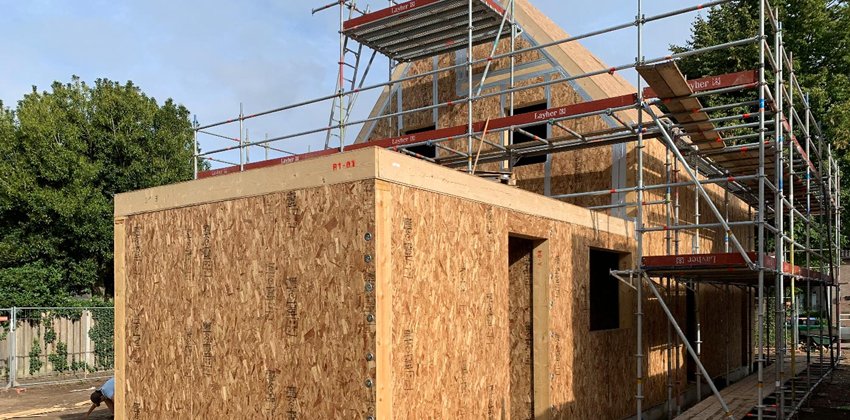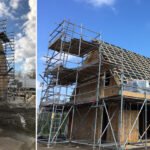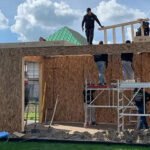
Installation Tips for Contractors: 7 SIP Pitfalls (and How to Avoid Them)
Structural Insulated Panels (SIPs) make construction faster, easier, and more efficient. But like any building system, they require proper handling and installation. For contractors, understanding the most common pitfalls—and how to avoid them—can mean the difference between a flawless project and costly callbacks.
This blog outlines the seven most common mistakes contractors encounter when working with SIPs and provides practical advice on how to avoid them. With the right preparation and training, SIP projects can be some of the most efficient and profitable builds in the industry.
Pitfall 1: Inaccurate Foundations
The Problem: SIPs are precision-manufactured. If the foundation is not level, square, and accurate, panels will not align correctly. Even small discrepancies can cause gaps, air leaks, or assembly delays.
The Solution:
- Double-check all foundation dimensions and tolerances before panel delivery.
- Use laser leveling to ensure accuracy.
- Correct any issues immediately—fixing foundations later is far more costly.
Pitfall 2: Poor Sealing of Joints
The Problem: SIP performance relies on airtightness. Poorly sealed joints allow air leakage, moisture ingress, and thermal bridging, undermining energy efficiency.
The Solution:
- Apply sealants, gaskets, or expanding foams as specified by the manufacturer.
- Train crews to follow sealing protocols meticulously.
- Inspect all joints during installation to ensure airtightness.
Pitfall 3: Improper Handling and Storage
The Problem: Although SIPs are durable, mishandling can cause edge damage, warping, or moisture exposure before installation. Panels left uncovered on-site are particularly vulnerable.
The Solution:
- Store panels flat on level ground and protect them from weather with tarps or shrink wrap.
- Avoid dragging panels across rough surfaces.
- Move panels with forklifts or lifting straps to prevent damage.
Pitfall 4: Inadequate Planning for Services
The Problem: SIPs are airtight and insulated, which makes planning for mechanical, electrical, and plumbing (MEP) systems critical. Poor planning leads to unnecessary drilling or damage to panels.
The Solution:
- Incorporate service chases during factory production.
- Use service cavities for plumbing and electrical runs.
- Coordinate with MEP contractors early in the design stage.
Pitfall 5: Incorrect Fastening
The Problem: Using the wrong fasteners—or incorrect fastening techniques—can compromise structural integrity or create air gaps.
The Solution:
- Always use manufacturer-approved fasteners and splines.
- Follow spacing and torque specifications.
- Train crews in SIP fastening techniques rather than relying on assumptions from traditional methods.
Pitfall 6: Ignoring Moisture Management
The Problem: While SIPs are moisture-resistant, poor detailing in cladding, roofing, or flashing can allow water intrusion. Over time, this leads to damage.
The Solution:
- Ensure continuous weatherproofing layers (cladding, membranes, flashing).
- Maintain proper site drainage and roofing details.
- Never leave SIPs exposed to the elements during construction.
Pitfall 7: Lack of Training and Supervision
The Problem: Many installation issues arise simply because crews are unfamiliar with SIP systems. Assuming SIPs work exactly like traditional framing leads to mistakes.
The Solution:
- Provide SIP-specific training before starting the project.
- Use manufacturer supervisors or experienced subcontractors for the first projects.
- Develop on-site checklists to ensure compliance with SIP best practices.
Best Practices for Contractors
To summarize, contractors can avoid pitfalls by following these best practices:
- Check foundations thoroughly before panel delivery.
- Seal every joint properly to ensure airtightness.
- Protect panels during storage and handling.
- Plan MEP systems early and integrate service chases in the factory.
- Use correct fasteners and techniques.
- Ensure complete moisture management with proper detailing.
- Invest in training and supervision to ensure long-term success.
Why Quacent Supports Contractors
At Quacent, we don’t just supply SIPs—we support contractors throughout the entire process. Our Ready-To-Assemble (RTA) kits are designed for intuitive assembly, with panels packaged by construction phase. We also offer training, digital resources, and on-site supervision for first-time SIP projects.
By combining product precision with contractor support, we ensure that SIP projects are not only fast but also reliable and profitable.
Conclusion
SIPs give contractors the tools to build faster, lighter, and better—but only if installed correctly. By avoiding the seven common pitfalls outlined here, contractors can deliver projects that meet the highest standards of energy performance, durability, and client satisfaction.
For contractors ready to take advantage of SIP technology, preparation and training are key. With Quacent’s support, SIP installation becomes not just simple but second nature.





Add a comment